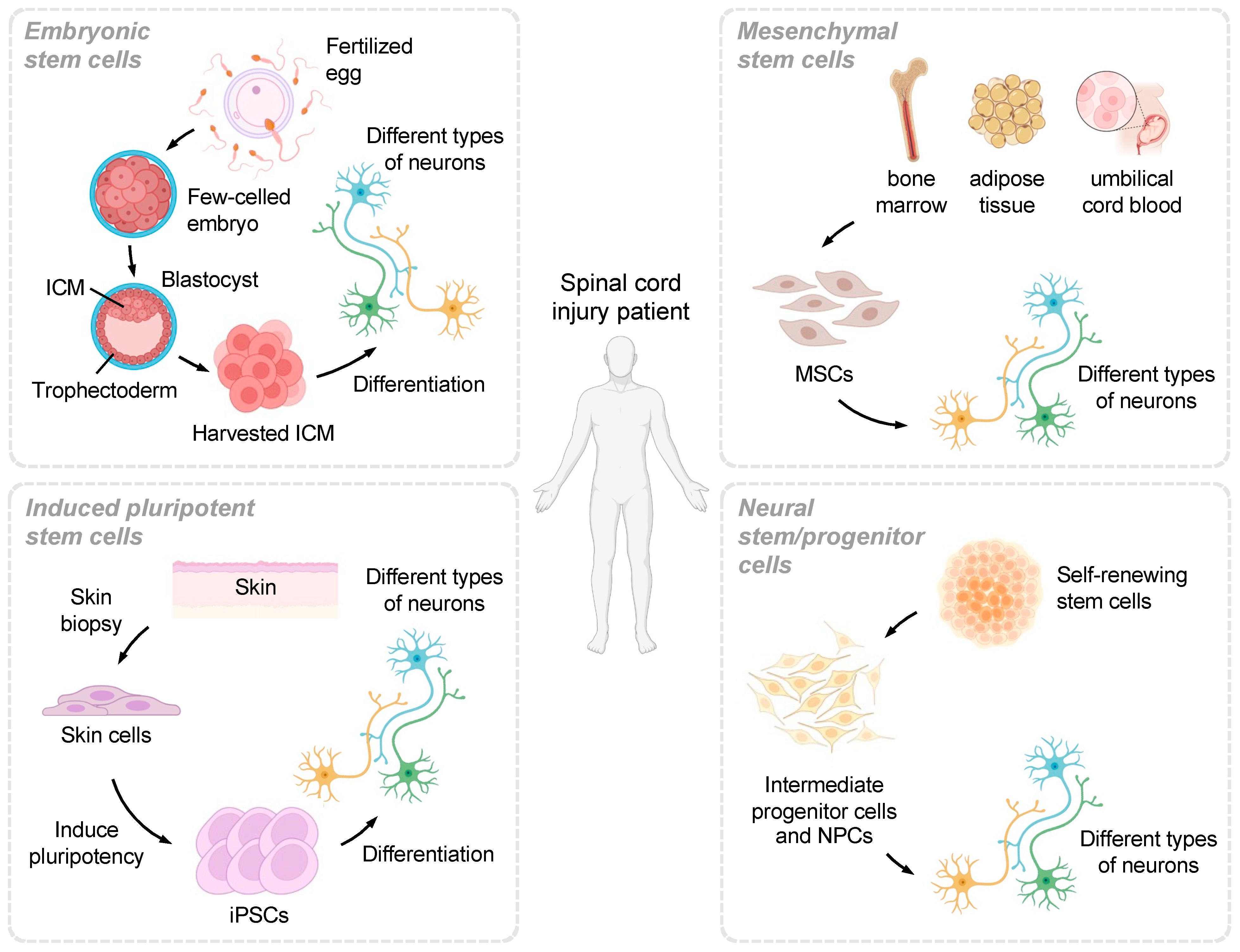Somatic Cells = all body cells that are not germ cells
Germ Cells = sex cells ( ovary / egg , and sperm )
Totipotent = everything , including extraembryonic ( placental ) tissue
Pluripotent = everything except extraembryonic tissue
Multipotent = everything in a particular class of cells. Hematopoietic ➡️ Any blood cell
Differentiated = final form , specialized cell
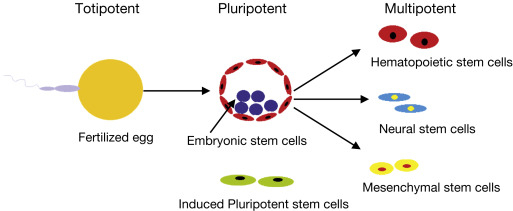
Stem Cells Types
Embryonic :
Pluripotent
derived from inner cell mass of mammalian blastocysts
proliferate infinitely while retaining pluripotency
Wait for morula to divide into blastocyst and form Inner Cell Mass ( ICM )
Collect ICM cells ( pluripotent )
Culture
Fetal :
Multipotent
Umbilical :
Multipotent
you bank them at birth and then don't have to worry about donor rejection problems
expensive over time
Adult :
Multipotent
Hematopoietic ( HSCs )
blood regeneration
derived from bone marrow
you can induce these just like iPSCs
created by reprogramming mature RBCs with growth factors
provide patient-specific blood cells without the need for donors
Mesenchymal ( MSCs )
tissue regeneration
derived from bone marrow
Neural ( NSCs )
Epithelial
Muscle ( Satellite Cells )
iPSCs / ES-like :
derived from somatic cells
created by nuclear reprogramming
pluripotent
gets rid of ethical issues
ES Cell - Single Blasomere Removal :
remove 1 of the 8 cells in the morula
similar to IVF
advantage = no embryo is killed
iPSCs
Production :
Reprogramming somatic cells to a pluripotent state by introducing specific transcription factors.
1 factor is not enough , minimum of 4 are needed
in order to obtain ES-like cells , designated iPS cells for induced pluripotent stem cells
Yamanaka Factors :
Oct4 : Stem cell self-renewal gene.
Sox2 : Maintains self-renewal and survival.
c-Myc : Promotes proliferation.
Klf4 : Enhances cell survival.
Typically introduced via retroviral vectors
Advantages :
Avoids ethical issues associated with embryonic stem cells.
Potential for patient-specific therapies.
Disadvantages :
integration into the genome is issue when using retroviruses
Morphology of iPSCs cells are indistinguishable from ES Cells
can't tell the difference
transplanted anywhere other than the placenta ( blastocysts ) , they produce teratomas
they showed it was technically possible in-vitro only to only need VPA and then 2 of the factors ( Oct4 and Sox2 )
suggests chemical reprogramming might be possible
but may provide cells for transplantation therapy and drug screening.
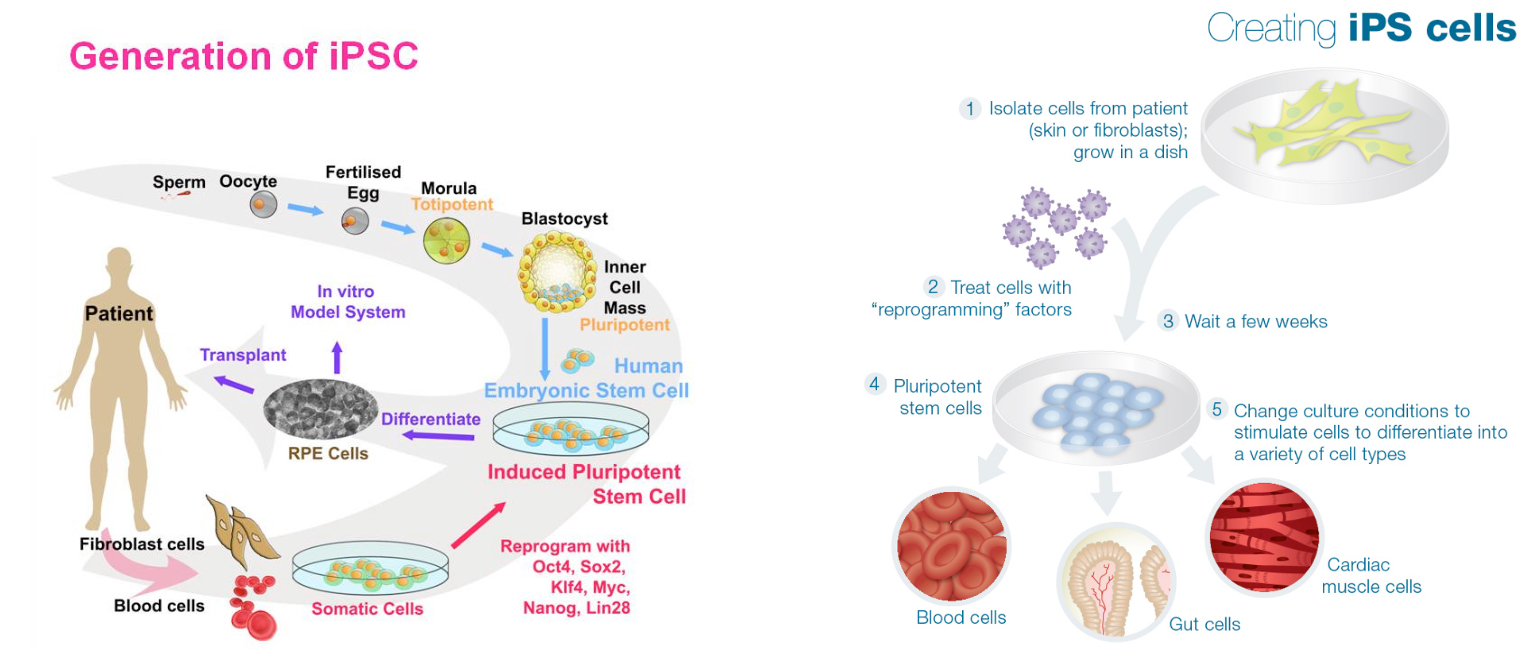
SCNT : Somatic Cell Nuclear Transfer
Production :
Remove nucleus from a egg / oocyte ( enucleation )
remove the polar body and chromosomes
Remove the nucleus from a somatic cell.
Transfer the somatic nucleus into the perivitelline space of enucleated egg.
Oocyte and donor cell are fused and activated by an electric pulse to begin cell division
Developed embryos transferred to surrogate females or grown in culture
Applications :
Creation of embryonic stem cells matching the donor's DNA.
Potential for personalized regenerative medicine.
Challenges :
Ethical concerns regarding embryo use.
Technical difficulties and low success rates.
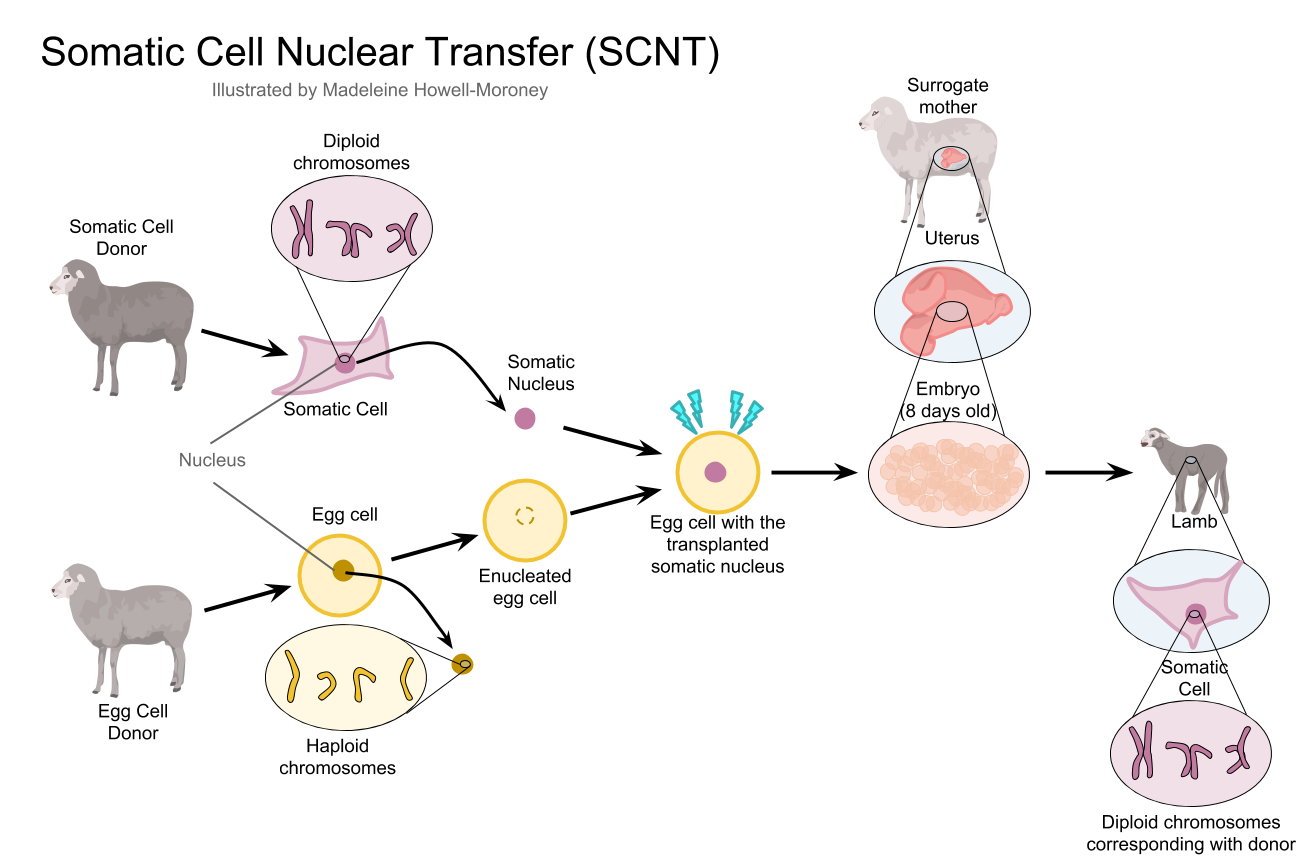
Cloning
How to Clone :
Remove Nucleus from an egg , keeping only the cytoplasm
Take some somatic cell ( fibroblast )
Fuse them together by shocking them
Grow and divide until blastocyst stage
Implant blastocyst in uterus
In Vitro Fertilization ( IVF ) :
NOT reproductive cloning
Animal Models :
Mice = straight forward , no real problems
Rats = stop dividing 4 cells unless they are given a secondary media
Mouflon Sheep = first successful clone using DNA from dead cells
To clone primates , you have to remove epigenetic marks
de-acetylation of DNA
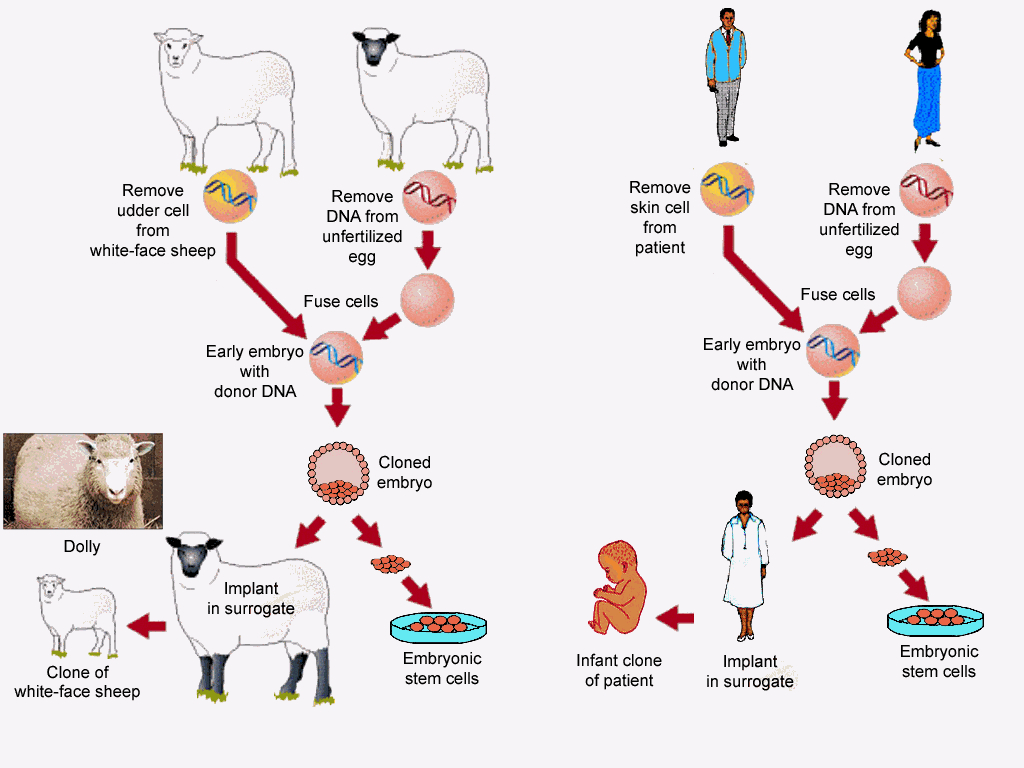
Misc
Stem cells let us clone things
Clone = genetic copy with exact same DNA
Monozygotic = single egg splits into identical twins
Dizygotic = two separate eggs = not identical
Inbred Strain = clone
Outbred Strain = not a clone
Everything morula ( 8 cells ) and smaller are totipotent
Lineage Determination :
signaling and positioning in the yolk sack determine fate and differentiation
also timing of exposure to different growth factors
To date , only Bone Marrow stem cells have been transferred effectively
Somatic cells can be reprogrammed by transferring their nuclear content into oocytes or by fusion with ES cells
proves cells have some kind of factors that allow them to be totipotent
Trophoblast organoids :
pseudo 3D micro environment
